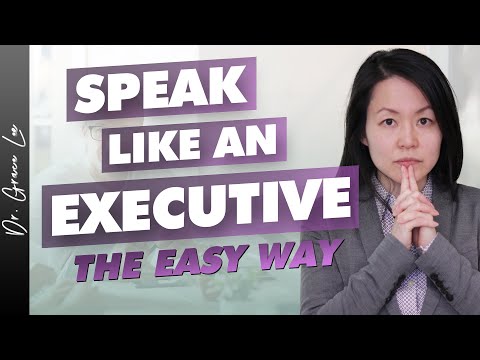The Unspoken Power of Executive Speaking in 2024
In the dynamic world of 2024, executive speaking has arisen as a crucial tool in the arsenal of every business mogul. It’s like packing your suitcase for a trip to the lustrous black sand beach Of Hawaii – just as you need your essentials and a dash of style, so do you need to carry your message with class, power, and charm!
The Interconnection Between Executives and Speaking
Executives, much like the nutritious complex Carbs in our diets, are the energy powerhouse propelling their companies forward. Each time they speak, they represent both their organizations and themselves. Hence, it becomes a pressure-cooker task to ensure their communication – whether verbal or non-verbisweets like – is strong, clear, and thoughtfully compelling.
It’s a rhythmic dance of ideas and words, syncing with the corporate symphony. From stakeholder meetings to public relations events, the wires of executive speaking connect the business world, internal and external, with an electrifying effect.
Speaking with Poise, Power, and Persuasion
Just like a choreographed ballet, the dance of executive speaking must be graceful and powerful – creating an impact that leaves the audience in awe. Address an audience with poise, harness your power, and persuade with conviction! Simple as peeling a banana, right? Well, in reality, it’s more like untangling the stringy mess of a banana peel – quite the challenge but impressively rewarding!
Commanding Attention through Effective Executive Speaking
Effective executive speaking is like being the conductor of a symphony. You step up to the podium, spreading a quiet magic with your words. The goal is to transform every presentation, every conversation, into an orchestra of credible and compelling communication that captivates the crowd, binding them in a spell of fascination.

The 7 P’s of Masterful Executive Speaking
Turning stumbling tongues to stirring speeches, the 7 P’s of Executive Speaking are a guiding star – pronunciation, pace, pause, punch, power, passion, and posture. Together, they create a symphony, a powerful blend of effective communication tuned just right to orchestrate success.

Sound Authority: The Impact of Pronunciation in Executive Speaking
Pronunciation – the difference between sounding like a confused tourist or like an eloquent local while navigating the maze of a foreign language. It can break the barriers of understanding – or build them! Precise pronunciation articulates sound authority and power.

Finding Your Rhythm: The Crucial Role of Pace in Executive Speaking
The pace is like the tempo of your speech, setting the rhythm for your words to dance along. It could be the hauntingly slow rhythm of a ballad or the lively beat of a pop song – it modulates the audience’s emotional response, controls their absorption of your message, and plays a pivotal role in maintaining interest.
Pause: The Silent Weapon of Powerful Leaders
Quieter than whispers yet louder than screams – the power of the pause! It’s a silent weapon in the combat of speech, a strategic gap allowing the audience to grasp the gravity of your words, generating anticipation, and adding dramatic effect.
Landing the Punch: The Art of Impact in Executive Speaking
A punch – no, not the physical sort nor the fruity beverage at a party – it’s the metaphorical jab you deliver to make your point. It’s the thunder that follows the lightning, it’s the ‘aha’ moment – the punch lands your words with a powerful impact!
Channeling Power through Voice: A Game-Changing Factor in Executive Speaking
Your voice is the vehicle carrying your words into the minds of the listeners. Like a magnificent maglev bullet train, your voice can rush your ideas into reality, channeling power, and becoming the game-changer in your executive speaking capacity.
Show Your Heart: The Influence of Passion in Executive Speaking
Passion is the wildfire in your speech – it creates an emotional connection, makes your words resonate with sincerity. The twinkle of excitement in your eyes, the vibrancy of your voice, and the electric charge of your words – all are testaments to your passionate essence!
Posture: Body Language Speaks Louder in Executive Speaking
Posture – it’s your body’s accent when it talks! A speaker’s posture sends non-verbal cues reinforcing the verbal communication. Stand tall, use gestures smartly and orient yourself to exude confidence – after all, physical eloquence parallels verbal eloquence!
| Category | Description |
|---|---|
| Purpose of Executive Speaking | Executive speaking aims to deliver a strong, clear, compelling message verbally and nonverbally, representing both the organization and the individual effectively. |
| Target Audiences | Executive speeches may be targeted towards either internal or external audiences, including employees, shareholders, clients, or the public in general. |
| Aspects of Executive Speaking | This includes speaking, presenting, and communicating with poise, power, and persuasion. Your effectiveness as an executive and future career depends on your ability to command attention and transform presentations into credible, compelling communications. |
| The 7P’s of Executive Speaking | These are important aspects of effective speaking: pronunciation, pace, pause, punch, power, passion, and posture. |
| Pronunciation | Articulation of words should be clear to improve understanding. |
| Pace | The speed at which you speak can affect the clarity of your message. The pace should vary depending on the point being communicated. |
| Pause | Strategic moments of silence can enhance the impact of the message, allowing the audience to absorb key points. |
| Punch | Emphasis on key words or phrases can make them memorable and impactful. |
| Power | The volume or force behind the words used can influence the audience’s response and perception. |
| Passion | Demonstrating enthusiasm and earnestness can increase audience engagement and belief in the message. |
| Posture | Non-verbal communication is important, as physical presence communicates confidence and competence. |
| Future Career Opportunities | Executives who are effective public speakers are more likely to advance in their careers due to their demonstrated leadership and communication skills. |
| Cost of Executive Speaking Training | Prices for training vary, depending on factors such as the level of the executive, the length of the course, and the qualifications of the trainer. Typically, prices can range from hundreds to thousands of dollars. |
| Benefits of Executive Speaking Training | Improved communication and presentation skills, increased confidence, enhanced leadership abilities, career advancement, and increased effectiveness in delivering organizational messages. |
The Future of Executive Speaking: Optimizing Your Skills for 2024
Just as the Swiss army knife continually keeps innovating to stay handy, executive speaking skills also need continual polishing and refining. Being adaptable, resilient, and visionary but maintaining authenticity is the key to executive speaking success!
Integration of The 7 P’s in Modern Executive Speaking
Modern executive speaking, akin to a modern robot, should be a prowess-packed package of the fundamental 7 P’s, dancing in dynamic rhythm with the swift pace of the world.

Evolving Your Executive Speaking Skills for 2024 and Beyond
As we pirouette into the future, executive speaking will evolve. Just like the world is continually rotating, so should your skills. Being open to learning, adapting, and growing will help you steer your executive voice to new horizons!

“Fetch the Future”: Mastering Your Executive Speaking Game in 2024
The only constant in life is change. It’s time to fetch the future, strap on our rocket boots and blast off into the cosmos of successful executive speaking.
Preparing for the Future: Sharpening Your Executive Speaking Tools
Look ahead, visualize, adapt, and upgrade your tools! It’s like training to be an astronaut with a public speaking coach to guide through the realm of executive speaking, making you agile and ready to maneuver the nebulous areas of communication challenges.
The Road to Mastery: Continual Improvement in Your Executive Speaking Journey
The journey is ongoing – keep moving, learning, and growing. After all, plants don’t just sprout and stop growing, right? They soak in the sunshine, drink the rain, sway in the winds, and rise towards the sky – similarly, soak in new learnings, drink the elixir of practice, sway in feedback’s wind, and rise towards mastering executive speaking!

Rolling Credits: The Long Road to Executive Speaking Stardom
The journey of executive speaking isn’t a sprint, but a marathon. It’s a journey that starts with the first step and continues along a winding road towards the horizon. So, steady your foot on the accelerator of the 7 P’s and gear up to be a star on the grand stage of executive speaking!
How do you speak like an executive?
Want to speak like an executive? Start by coming to grips with your voice—it’s your main instrument, after all! Pay attention to your tone, pace, pitch, and volume. Start incorporating essential elements like maintaining clarity, brevity, and relevance in your conversations. Of course, productivity-jargon or industry buzzwords can spice things up, but remember, simplicity and authenticity always carry the day!
What is executive speech?
Executive speech, my friend, is the big cheese of business communication. It’s not just about big words or flowery language. It’s about being concise, influential, and persuasive. It’s defining your vision, inspiring the team, and making sure your message hits home. It’s not just hot air; it’s all about making a real impact.
What are the skills of executive speaking?
Skills of executive speaking? Well, they’re like tools in a swiss army knife! It encompasses being articulate, confident, and empathetic. Includes active listening, managing nerves, and communicating with clarity. Not forgetting: understanding the audience, using appropriate body language, and storytelling. In a nutshell, you become a language-loving, empathy-emitting, confidence-oozing powerhouse!
What are the 7 P’s of public speaking?
The 7 P’s of public speaking are pretty simple: Purpose, preparation, practice, poise, passion, presence, and projection. Following these, ladies and gentlemen, can skyrocket you from a mumbling mess to a cool, composed, charismatic chatterbox!
How do you speak very professionally?
Speaking professionally isn’t rocket science, don’t sweat it. Respect your listener, maintain verbal and non-verbal communication, and express yourself clearly and confidently. Keep away from slang or overly complicated terminology. Oh, and remember, context is queen—always tailor your speech to suit the situation.
How do you speak as a genius?
Speaking like a genius? Easy peasy. Keep yourself informed, think before you speak, pose thoughtful questions, and enjoy intellectual conversations. Be curious, appreciate others’ ideas, don’t boast about your smarts, and, hey presto, you’ve got the floor. Now, isn’t that genius?
What does an executive presentation look like?
Imagine an executive presentation like a movie premiere. It’s polished, practiced, professional and personal. Conveys a compelling narrative. Uses visuals smartly and sparingly. It engages, educates, and excites the audience. Oh, and it packs a punch with a solid call-to-action. Spot on!
How do you write a CEO speech?
Writing a CEO speech? Keep the audience and purpose in mind. Start with a compelling opener, pour heart into the core message, and close on an inspiring note. Don’t shy away from personal anecdotes and humour—people eat that stuff up! But remember, keep it real and relevant. That’s the secret sauce!
How do you introduce an executive speaker?
Introducing an executive speaker? Lightly butter the crowd by sharing their credentials, achievements, and a dash of personal touch—maybe a fun fact or anecdote. Keep it brief, flattering but not fawning, and round off with enthusiasm. Now that’s what I call setting the stage on fire!
What are the 3 P’s of speaking skills?
The 3 P’s of speaking skills? Adobe would be proud! It stands for Plan, Prepare and Present. Plan your content, prepare yourself thoroughly and present confidently. It’s mind-blowingly simple, yet incredibly powerful.
What makes good executive communication?
Good executive communication is like a Swiss watch: precise, reliable, and authoritative. It’s about diving deep into issues, finding solutions, and sharing decisions effectively. It’s about authenticity, empathy, and strategic thinking. In a nutshell, it’s, well, packed to the rafters with leadership!
What are the 5 aspects of a powerful speaking voice?
A powerful speaking voice incorporates five aspects—volume, pitch, rate, quality, and clarity. Harness these, and you’ll have your audience eating out of your hand!
What are the 6 C’s of public speaking?
The 6 C’s of public speaking—now there’s a winning combo. Here they are: Clarity, Control, Confidence, Charm, Conviction, and Conversation. Nail these, and you’re golden!
What are the 3 S’s of public speaking?
The 3 S’s of public speaking are all about keeping it simple, sincere, and short. Stick to these S’s when you’re spouting speeches, and you’re sure to succeed.
What are the 5 S’s of public speaking?
Now let’s crank it up a notch with the 5 S’s of public speaking. They are: Structure, Substance, Style, Speed, and Sound. Mesh them together, and watch your words work wonders.
How can I improve my executive communication skills?
Want to improve your executive communication skills? Listen first, then speak. Avoid jargon, tell compelling stories, and keep your emotions in check. And remember, practice doesn’t just make perfect—it makes you an executive communicator par excellence!
How can I speak English like a CEO?
To speak English like a CEO, focus on clarity, confidence, and courage. Ditch the jargon, embellish with buzzwords sparingly, and don’t be afraid of sounding assertive. Because, let’s face it, being the boss is as much about sounding like one as it is about acting like one.
What makes good executive communication?
Good executive communication is all about the 3 C’s: Clarity, Conciseness, and Completeness. In other words, say what you mean, say it concisely, and don’t leave anything important out. Now that’s nailing it on the head!


















